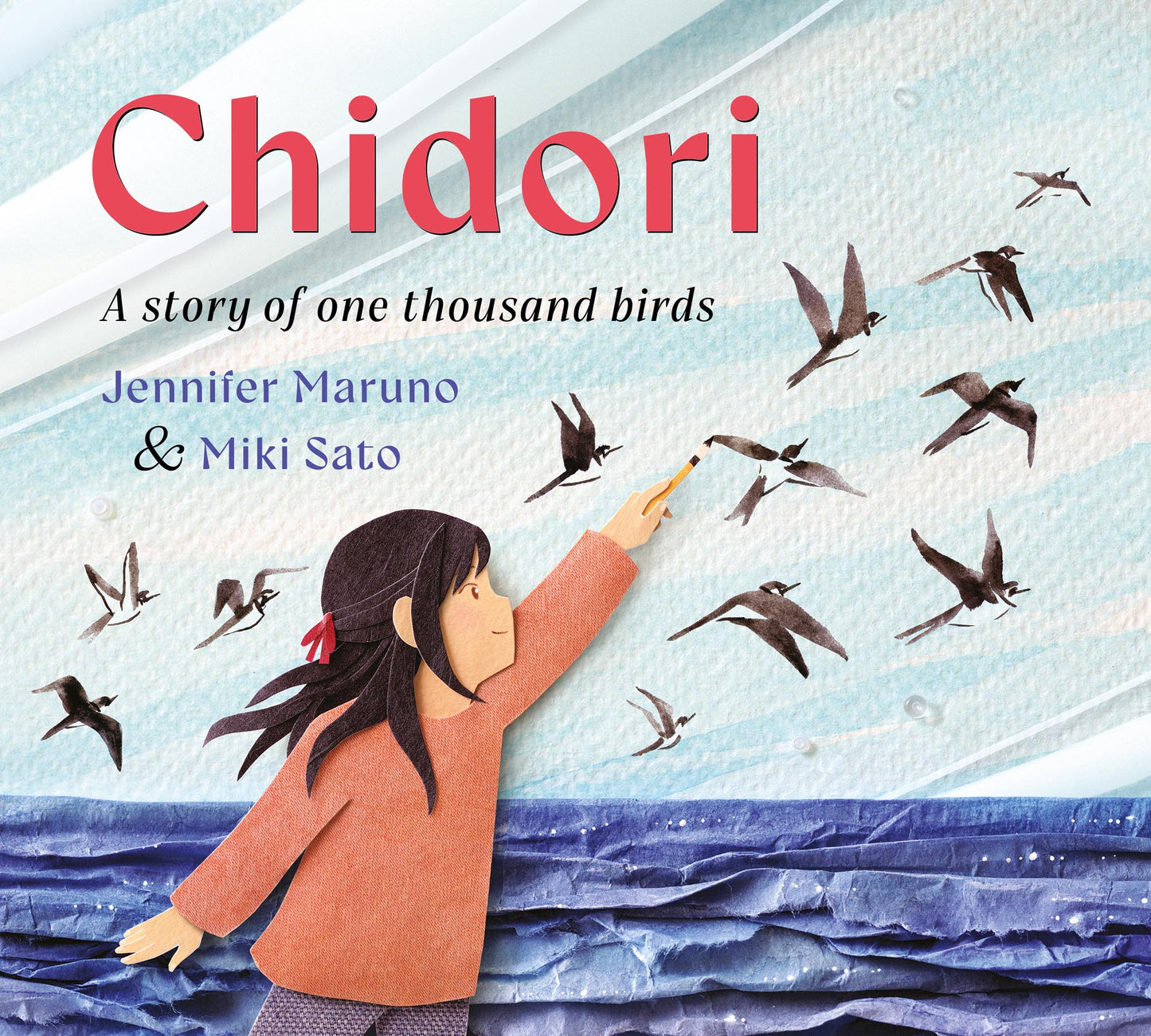Description
Hana is at school when the devastating tsunami sweeps over Japan. But when the dark wave finally returns to the ocean, it has taken more than Hana could have ever imagined.
Hana’s school sits on the side of a hill with a view of the ocean. One day, while in class, a tsunami drags the ocean across her village. Hana watches in horror as the dark water crashes into trees and tosses cars and boats around. When she is finally reunited with her family, she learns that the wave has taken more than she could have ever imagined. To cope with her grief, Hana begins to paint chidori (a thousand birds).
Miki Sato’s collage art, which combines paper, textiles, and watercolor, creates a three-dimensional world that is rich in emotion, detail, and texture.
Jennifer Maruno writes with compassion and heart, bringing life to this story inspired by true events.
Author Bio
JENNIFER MARUNO, retired elementary school principal, is the author of seven novels for middle grade and young adult readers as well as two picture books. Former Vice-President of the CANSCAIP, among other literary roles, Jennifer currently enjoys mentoring other writers. Her latest picture book, While You Sleep, published in 2022 by Pajama Press received starred reviews from Kirkus and Quill and Quire. She lives in Burlington, Ontario.
Review text
Praise for Chidori
CBC’s 33 Canadian Kids' Books We Are Excited to Read in Spring 2025
The Children’s Book Council “Hot off the Press” April 2025 Selection
“Sato’s signature mixed-media artwork has a three-dimensional feel, well suited for young readers; it deftly evokes the power of the earthquake and subsequent tsunami on the town, as well as the people’s quiet sadness and recovery. A moving introduction to a tragic event.”—Kirkus Reviews
“This story of loss is told in a straightforward way and is enhanced by collage art that shows the impact of the tsunami, but also suggests the healing power of art.”—School Library Journal
“Gorgeous collage illustrations use multiple mediums to complement this touching tale of finding hope within loss.”—Foreword Reviews
“Miki Sato! Man, do I love that woman’s work ... she’s helped to bring to life a pretty serious story.”—School Library Journal, Fuse 8

